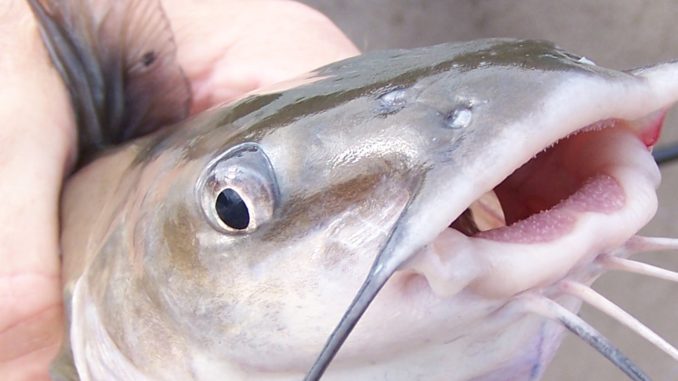
While many die-hard catfishermen make their own stinkbait concoctions guide Chris Simpson’s favorite is Sonny’s Super Sticky Channel Catfish Bait, which comes in a 15-ounce jar or 45-ounce tub and is designed for channel catfish.
All species of catfish are lumped together as scavengers when in truth, specific baits all have different appeals depending upon the type of catfish you’re targeting. Flatheads will turn up their noses at anything other than live bait or a fresh cut bait. Blue catfish tend to be more opportunistic feeders but still depend largely on fresh fish, mussels and crayfish.
If there is a true scavenger in the group, it’s the channel catfish, but the label scavenger is mostly a misnomer, owing largely to the species’ highly developed olfactory sense. Catfish have olfactory pits on each side of their head, and each pit has two nostrils; water comes in one nostril and goes out the other. The olfactory pit has 140 folds inside that are lined with sensitive tissue for detecting food. By comparison, a rainbow trout has about 18 folds while a largemouth bass has roughly a dozen. Channel catfish have the capability to detect one part food in 10 billion parts water.
“I don’t know what’s in it, but it smells good to channel cats and it sticks really well to a piece of swim noodle when you dip it in the jar,” Simpson said. “I can always rely on it in warm weather to catch channel cats.”


Be the first to comment